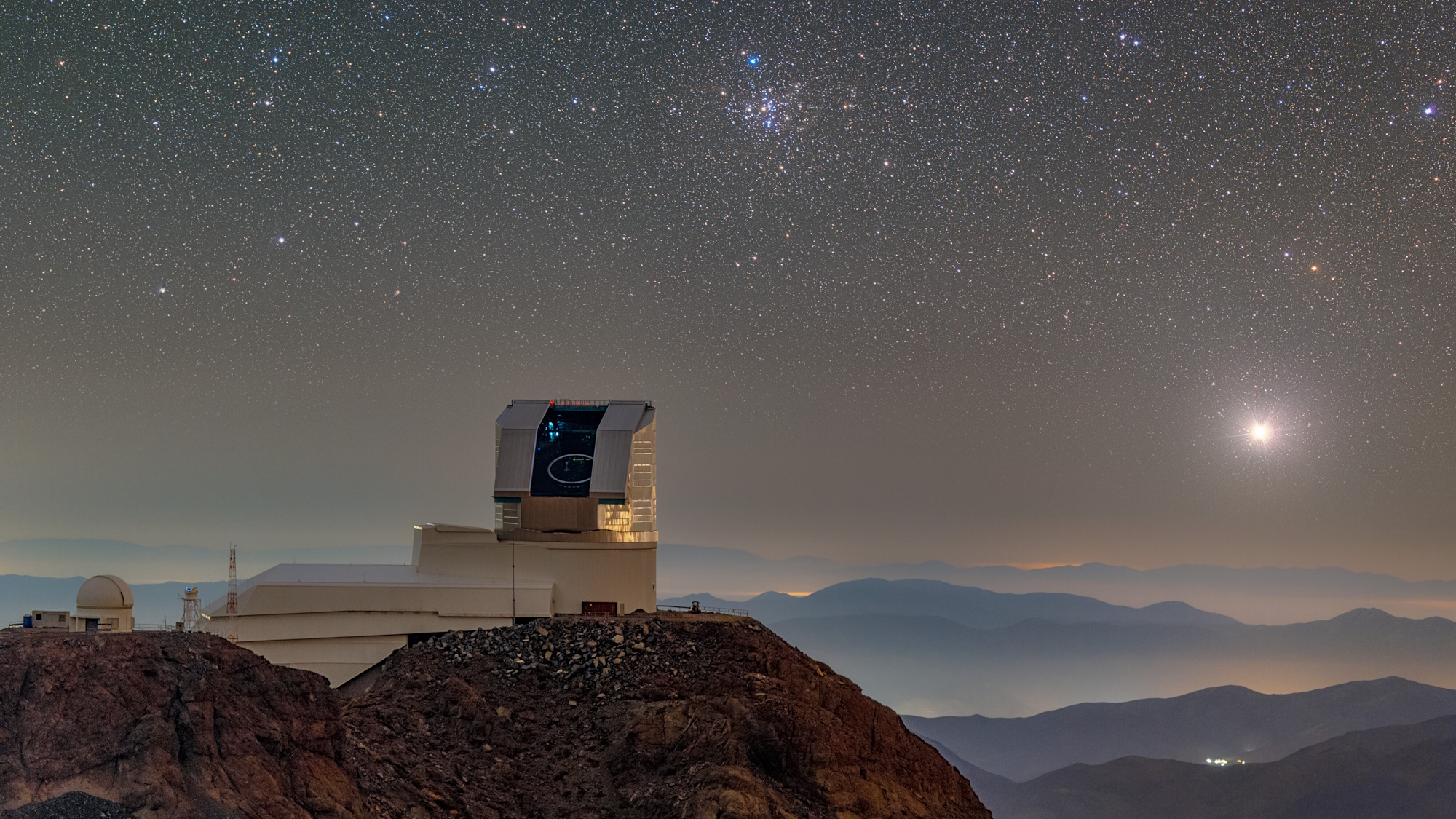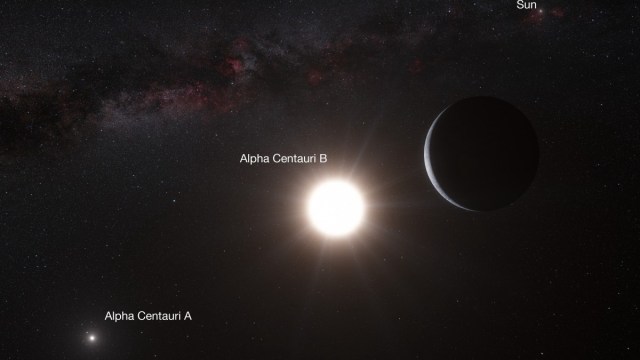Why are Pluto and Charon so different?

The two best-explored outer Solar System worlds orbit one another. But no one was prepared for what New Horizons saw.
“Just as a Chihuahua is still a dog, these ice dwarfs are still planetary bodies. The misfit becomes the average. The Pluto-like objects are more typical in our solar system than the nearby planets we first knew.” –Alan Stern
It took a journey of more than nine years and three billion miles (~five billion km), but New Horizons made it all the way to Pluto, and gave us our first up-close look at our Solar System’s outermost worlds. We had learned some spectacular facts about the Plutonian system from the ground:
- the presence of an atmosphere around Pluto consisting of nitrogen, carbon monoxide and methane,
- the existence of Charon, a giant close-orbiting moon, and four other, outer moons, Styx, Nix, Kerberos and Hydra,
- and the fact that Pluto has a reddish color, but is somewhat on the high side of reflective.
Of course, all of that got a whole lot more interesting when we finally arrivedat Pluto!
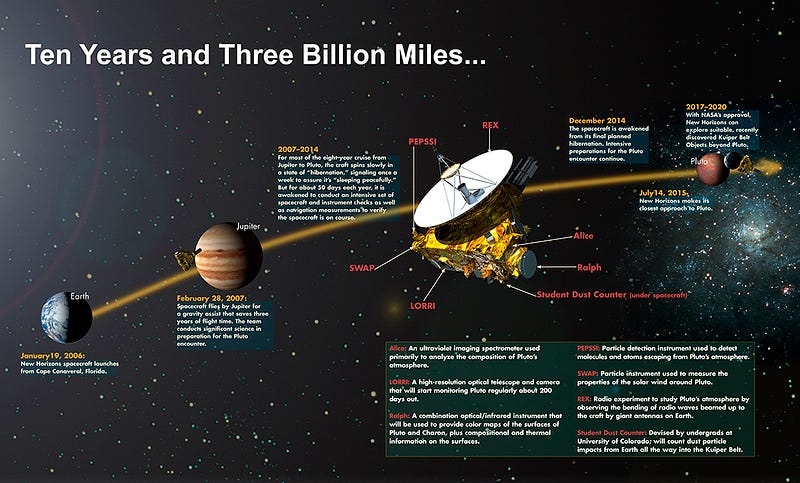
As we got closer and closer, we found a number of things we very much expected: a reddish, detailed Pluto with interesting and variable surface features. We also found Charon, tidally locked to Pluto, where the same face of Charon and Pluto always face each other. But shocking were the differences between the two worlds.
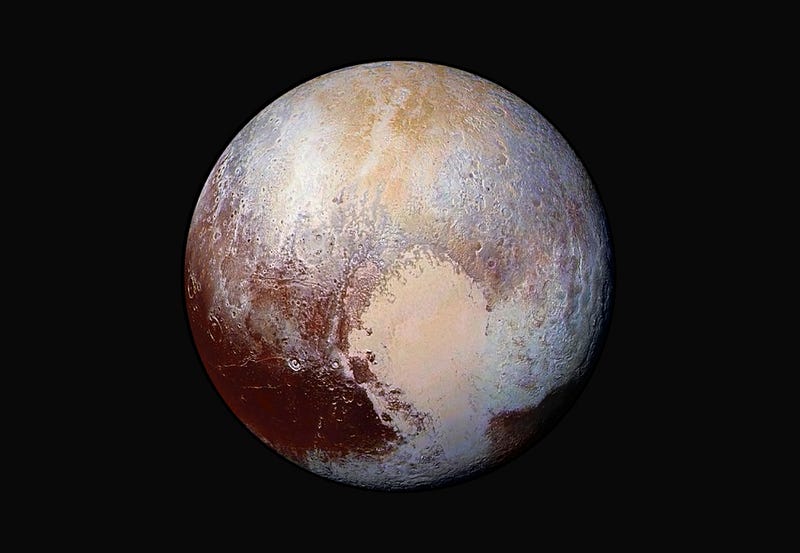
Whereas Pluto was icy, mountainous, and new, with plenty of large regions devoid of craters, Charon appeared rocky, flat, and a dull grey in color. It had a mysterious darker, red patch in its polar region, which we now know is due not to iron but to tholins, a class of compounds that forms in the outer Solar System due to sunlight shining on molecules like methane. And while Pluto’s terrain showed tremendous variety, like ice mountains as high as the rockies, capped in methane snow, floating atop a varied planes made up of a nitrogen ice, Charon — much like the Moon or Mercury — looks pretty much the same everywhere.
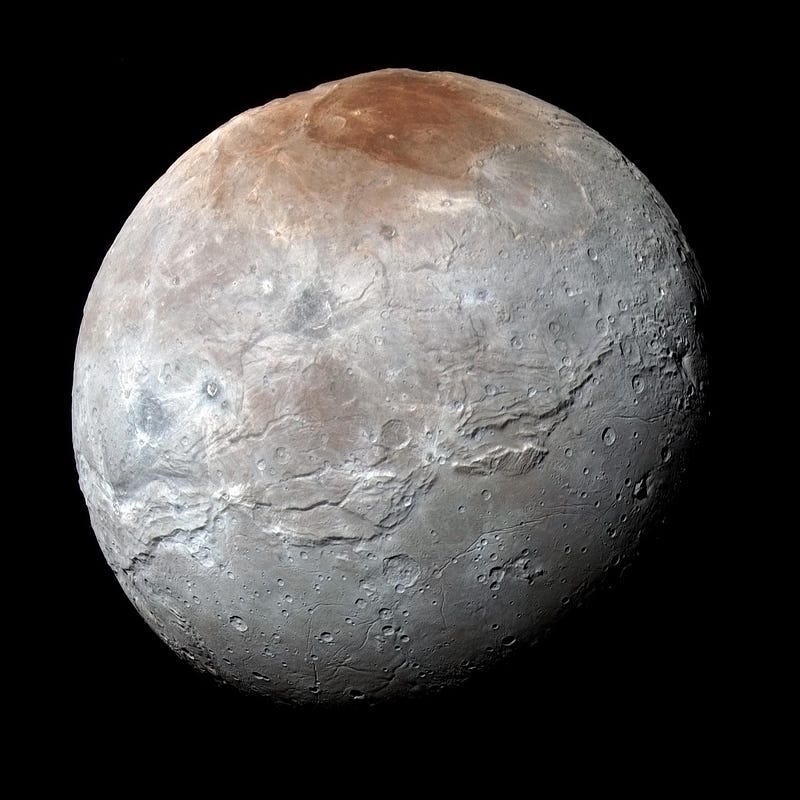
Pluto is more reflective than Charon; Charon is much darker than Pluto. Charon has craters pretty uniformly everywhere; Pluto has regions completely devoid of craters larger than a million square kilometers in area. (The only place in the Solar System with more crater-free surface area is Jupiter’s moon Io, which is constantly resurfaced by lava.) Pluto is a world covered in volatiles, or chemical compounds that sublimate (like boiling, but going directly from solid to gas) in the sunlight, rise to the upper atmosphere, cool, condense, and precipitate. The different densities and properties of the major surface components — water, methane, carbon monoxide, nitrogen — lead to a constantly changing surface. Resurfacing events occur, mountains rise and crumble, and cracks form. It’s nothing like Charon, which appears to be free of all of these volatile components.

The most telling observation about the extraordinary differences between these two worlds came from a spectacular maneuver that was planned and executed flawlessly: New Horizons, upon flying by Pluto and Charon, took a path that brought it into the shadow cone of each of these worlds: first Pluto’s, then Charon’s. When you fly into the shadow of a world, you see it in eclipse. The Sun is blocked out completely, and so the only light you see is the light that gets refracted through the world’s atmosphere, bent towards your eyes. So what did we see for each of these?
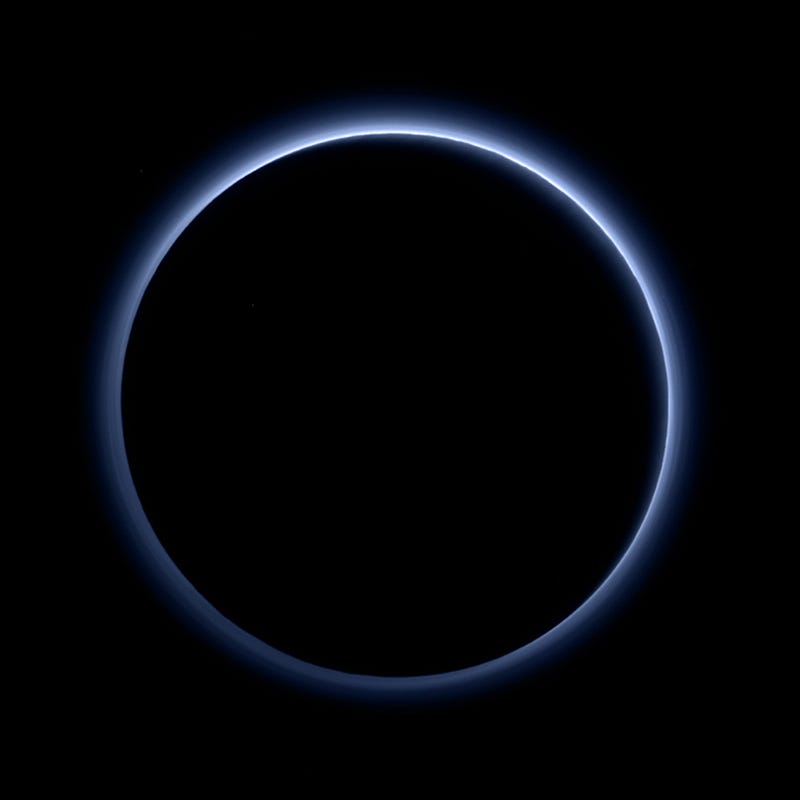
Pluto was spectacular. As this nearly true-color photo shows, Pluto’s atmosphere is blue, much like Earth’s. We were able to measure its various layers, determine its composition and extent, its temperature profile, and to see how the different elements are segregated in the lower, middle and upper atmospheres. The atmosphere is very tightly bound; we had expected a looser atmosphere that was escaping at a certain rate, but the observed rate is less than 1% of what we predicted. And even though the atmospheric pressure is only a small fraction of a percent of what Earth’s atmosphere is, Pluto has a rich system of weather that we (thankfully) got to probe in detail for at least a little while.
Most spectacularly, the “ring” around the planet comes from the refracted sunlight, bent by the atmosphere to encounter the spacecraft’s camera. But we don’t have a photo from the pass behind Charon at all. Not because New Horizons wasn’t taking data; it very much was. There’s no picture to show you because there was no light; to the best of the spacecraft’s ability, it was unable to detect any trace of atmosphere around Charon. Less than one-one billionth of Earth’s atmosphere and at least 10,000 times as sparse as Pluto’s, Charon is a completely airless world, as best as we can tell.
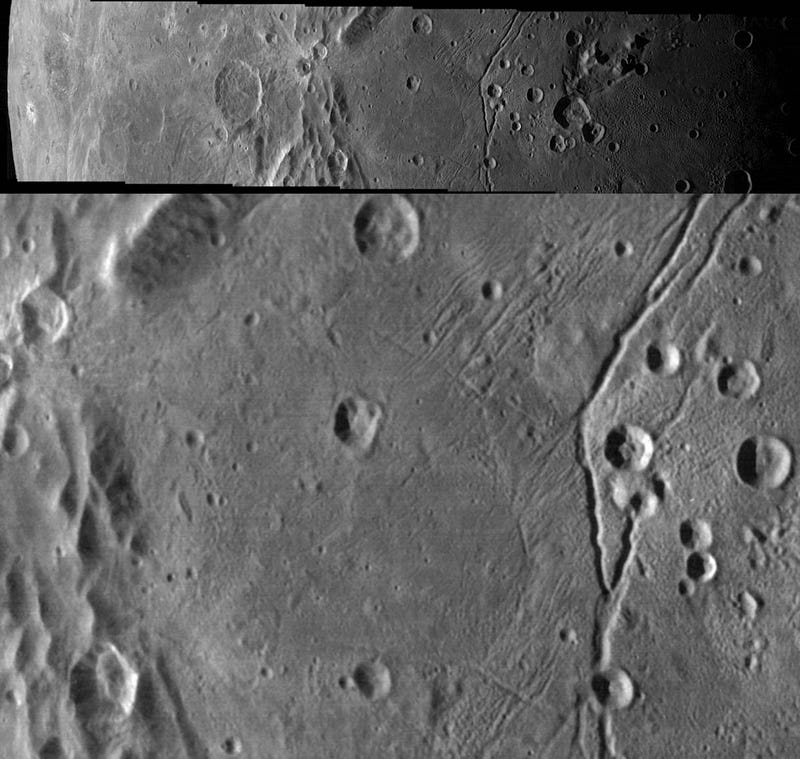
The big question, of course, is why. No one expected these two worlds to be so different at all! Pluto appears to be, from its density, about 30% ices and 70% rock. You might expect Charon to be darker and more heavily cratered if it were ice-free and 100% rock, like the inner Solar System worlds it more closely resembles. But Charon has a much, much lower density: it’s actually almost 100% ice. So why is Charon different in color? Why is it crater-rich everywhere? And why is it so different from Pluto? Even though we didn’t know that these questions even needed to be asked prior to July, the same set of photos we took of these two very fraternal twins holds a clue to the answer.
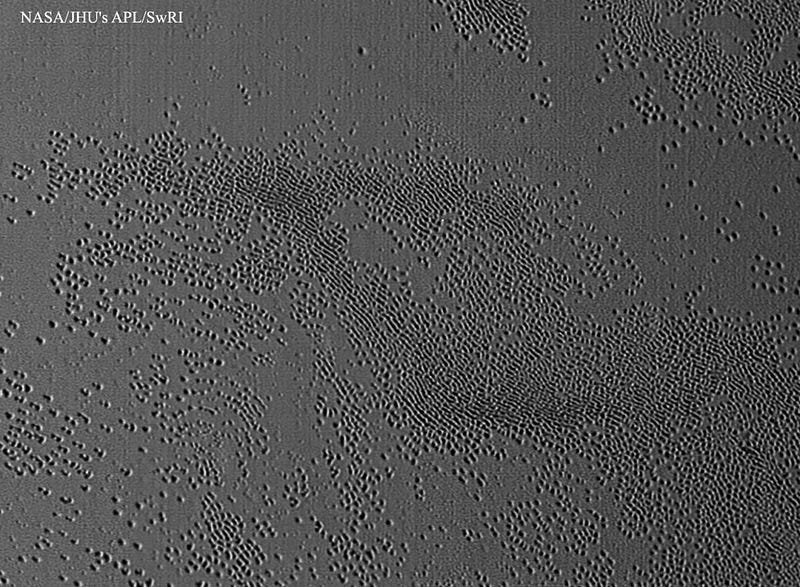
You see, above, that among Pluto’s crater-free plains are regions that have pits in them. What’s presumed to be happening here is sublimation, where the solid nitrogen ice transitions to a gaseous phase, leaving only whatever non-volatile materials lie beneath. What you might notice is that the bottoms of these pits appear darker than the rest of Pluto’s surface. We don’t have the definitive proof (yet), but it’s very likely that what’s underneath these ices actually looks a lot like what we see on Charon’s surface. In other words, we expect that Pluto does look very much like Charon does, but only if we were to strip away all the volatile ices that coat the outer surface. Underneath the Plutonian surface, there’s a Charon-like world.
So what happened to all the volatiles that Charon surely had at one point? You see, if Pluto is 30% ice/70% rock, but Charon is almost 100% ice, that means they couldn’t have formed together! They must have different origins, and therefore must have coalesced to form a binary pair later on. But when you get two worlds that are this close together, the one that’s denser, with more concentrated mass, can potentially strip the most loosely-held material off of the other one. In the case of the less dense, lower mass Charon, that likely means it once had these same volatile materials — like nitrogen and methane — and that Pluto stole them!
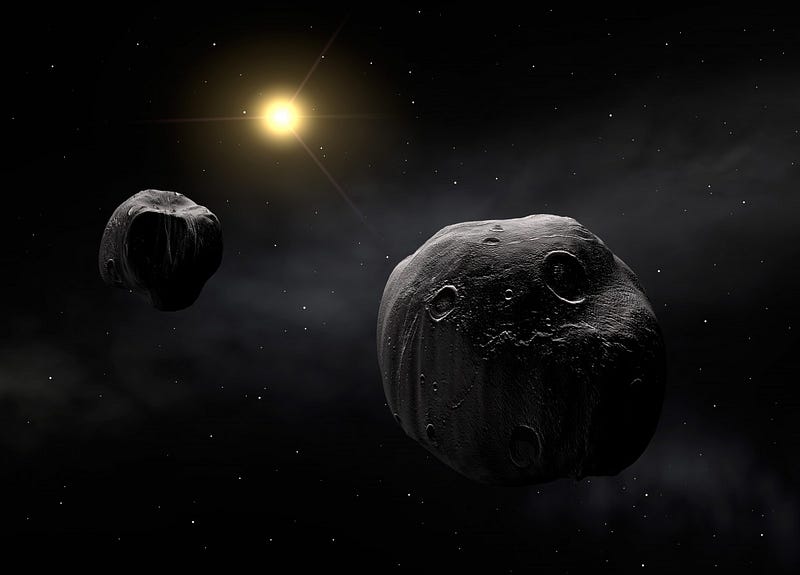
If Charon and Pluto had never found one another, Charon would quite possibly still have those volatiles, and would be as bright and reflective as Pluto appears to be. This also means that most large objects out in the Kuiper belt probably look a lot more like Pluto than they do like Charon. For a long time — nearly 50 years — we thought that Pluto was quite possibly alone in the outer reaches of the Solar System. Now, we know it’s not only the largest body in a belt filled with millions of objects and dozens-to-hundreds of large ones, but that it’s the reason Charon, quite literally, has no clothes.
This article was partially based on information obtained during the 227th American Astronomical Society meeting, some of which may be unpublished.
Leave your comments on our forum, and check out our first book: Beyond The Galaxy, available now, as well as our reward-rich Patreon campaign!



